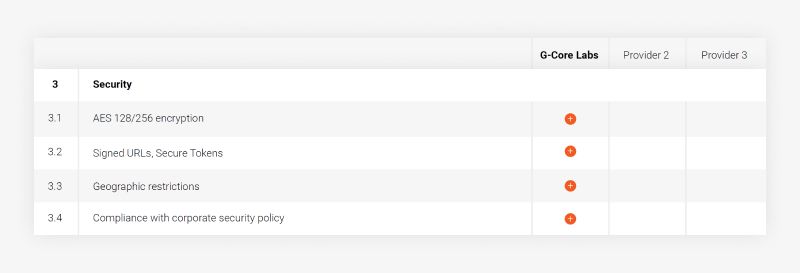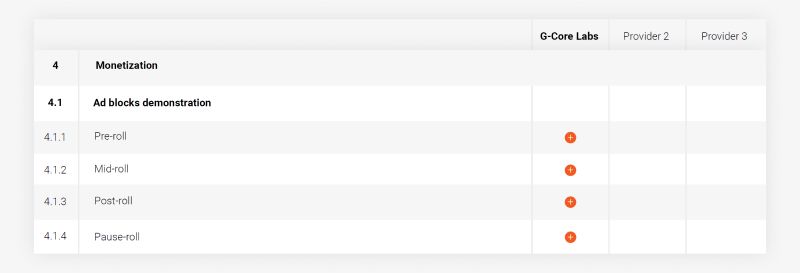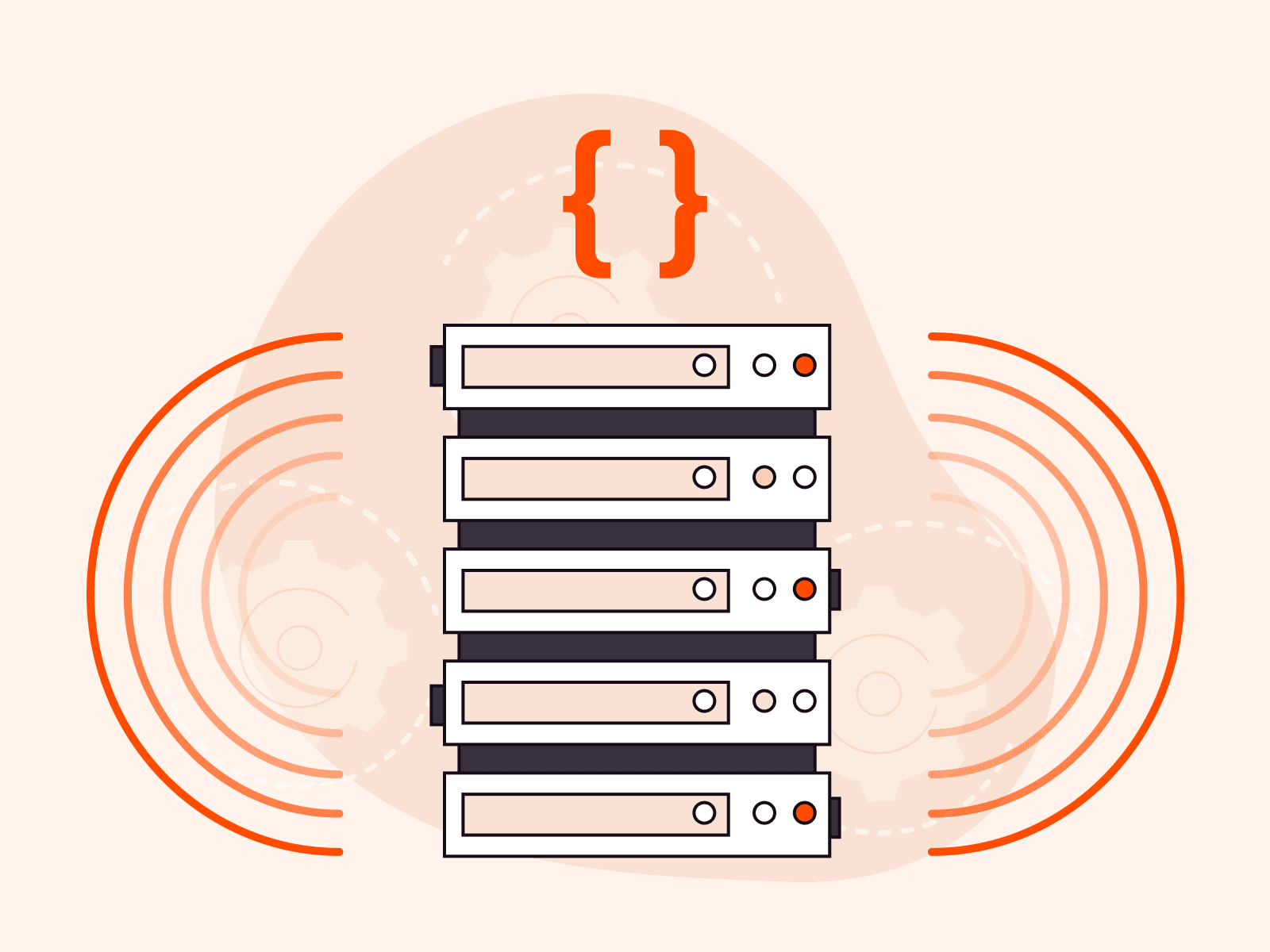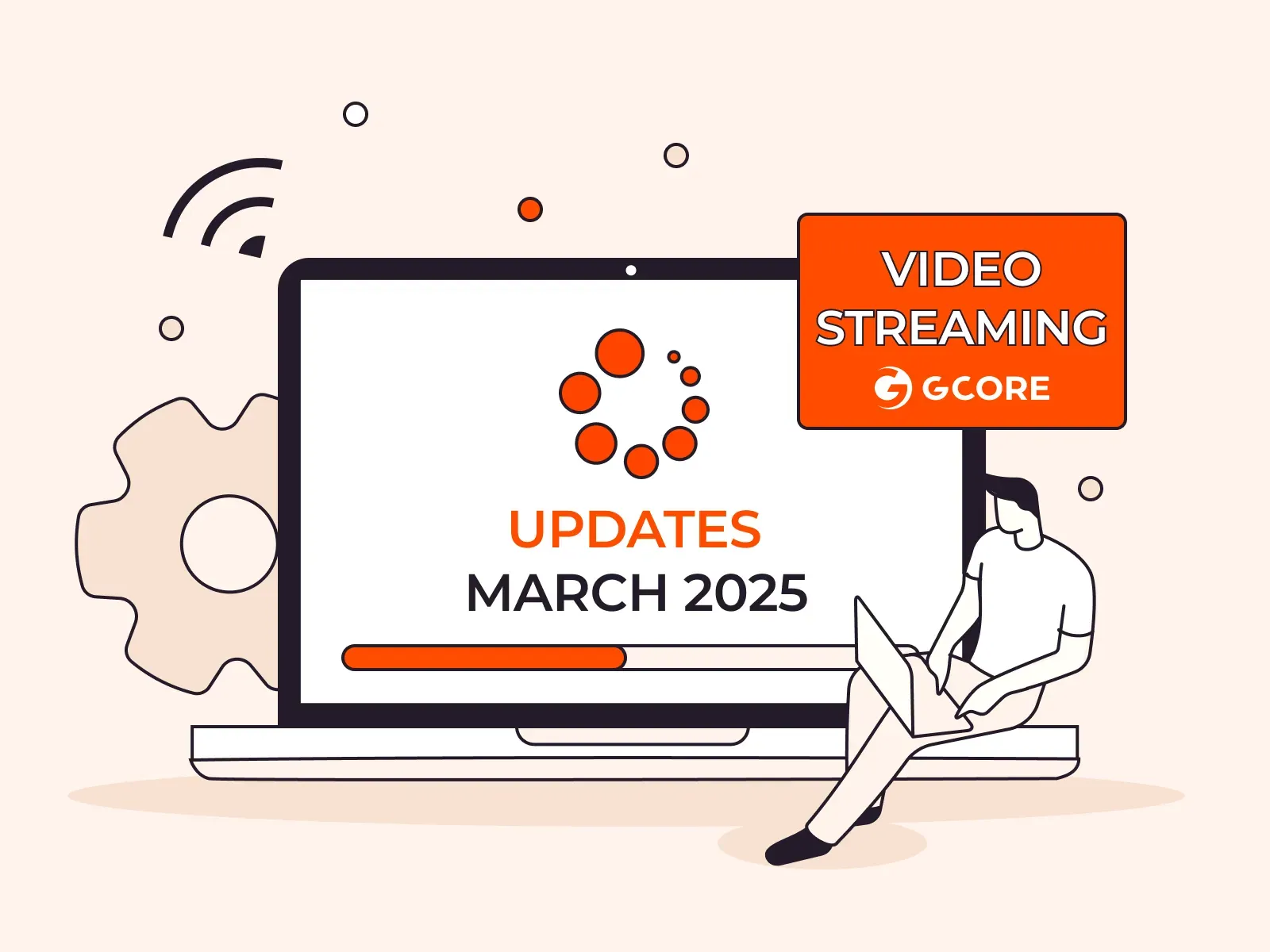Streaming services are rapidly growing in popularity. Video content production has long exceeded the limits of media and entertainment. Many companies including online stores use broadcasts as a means of attracting their target audience and as a sales channel.
If you are going to use streaming services to bring your business ideas to life, you may face with the challenge of choosing the right streaming platform. There are hundreds of free and paid solutions on the market, and each of them is meant for solving different tasks.
What should you do in order not to get lost in the vast variety of options, to choose the variant that suits you best, and avoid overpaying? Let’s discuss it.
What is a streaming platform
A streaming platform is a special service that allows users to publish their video content online and broadcast it to their audience.

Different platforms have different features. For example, some solutions cover all broadcasting stages from video capture to playback. Other platforms cover only some of the tasks like ready-made video delivery and playback.
Streaming platforms can be used for different purposes including:
- broadcasting large sports and social events, concerts, festivals, and conferences;
- webinars and online learning;
- news reports;
- e-sport and online games;
- video conferences;
- on-premises video chats;
- movies, TV series, shows;
- live streaming for online sales.
Before starting to choose a service that suits you project, you need to decide which tasks you would like your streaming platform to solve.
Why do you need a streaming platform
Which aspects to consider when choosing a streaming platform? It depends on your goals.
For example, if you are launching a paid online course and if you want to give access to your lessons only to those users who have paid for them, the first thing you’ll need is limited access to videos and protection against copying, while monetization opportunities will be less important to consider.
Conversely, if you are going to broadcast your video content for a wide audience, you will be interested mostly in the ad insertion features offered by the platform and in preventing the ads from getting blocked by Adblock.
Here are several issues to consider. Answering the questions listed below will help you better understand your tasks and navigate you on the vast market of technical solutions:
- How large is your audience going to be: 10–20 people or millions of viewers?
- How are the users supposed to get access to your video content? Is it going to be accessible for everyone or for a limited audience only (e.g., by paid subscription)?
- Are you going to insert any ads into your videos?
- Which devices will your video content be available for watching on?
- Do you need any extra features like a chat with your viewers and the opportunity to show presentations and share your screen?
- How large is your streaming platform budget?
Answering all these questions will facilitate making the right decision.
How to choose a suitable streaming platform
We’ve made up a shortlist of criteria that you absolutely need to consider:
- Live Streaming and Real-Time Streaming capacities.
- Video storage.
- Security.
- Monetization opportunities.
- Streaming costs optimization.
- Compatibility with all kinds of devices.
- Usability.
- Statistics tools offered by provider.
- Technical support.
- Price and free testing.
These criteria will help you compare several solutions and choose the one that suits you best. Always remember your goals while comparing the services. Some aspects matter a lot for your project whereas you can save money on some less important aspects.
Let’s consider each of the criteria in detail.
At the end of each block, you’ll find a part of our checklist concerning the criterion discussed in this block. You can download the full checklist by clicking on the link in the end of the article.
1. Live Streaming and Real-Time Streaming
If you are planning to hold live broadcasts, consider which broadcasting features the streaming platform offers.
Which protocols does it support? Does it accept RTMP/RTMPS and SRT streams?
It is highly advisable to check if the platform supports some useful streaming functions like live broadcast rewinding (DVR), recording, and rebroadcasting your video content to social networks.
In addition to that, the platform should be capable of minimizing latency during live streams.
Minimized latency
Minimized latency is now a trend in all kinds of broadcasts. The viewers want to watch videos in real time, and the leading streaming platforms do their best to meet the users’ requirements.
Many providers offer not just Low Latency Streaming but even Ultra Low Latency Streaming.
Ultra-Low Latency Streaming costs more money. This is why you should get to know the difference between Low and Ultra Low Latency Streaming before making your final choice. Only then will you be able to decide whether your project needs it.
Low Latency Streaming or Ultra-Low Latency Streaming—what to choose?
Low Latency Streaming implies that the latency during the broadcast doesn’t exceed 4 seconds. To achieve this, our platform uses the Chunked CMAF technology. It divides the video into small fragments called chunks and delivers it in parts.
With Ultra-Low Latency Streaming, the latency doesn’t exceed 1 second. This is usually achieved by using the WebRTC technology. This communication standard allows us to deliver video content directly from browser to browser without using any additional extensions or software.
Opting for the latency that doesn’t exceed 1 second is necessary when you make video calls or hold conferences and webinars, i.e., when you interact with the viewers and event participants in real time.
If your online event doesn’t imply communicating with the viewers in real time, opting for the 4-second latency will be enough.
Integrating streaming service with CDN
When discussing Low Latency Streaming, it is important to mention CDN integration.
CDN (Content Delivery Network) consists of many servers (i.e., points of presence) that are connected with each other. They receive data from the origin server, cache them, and deliver them to the end users. CDN allows you to deliver your content as fast and trouble-free as possible to a large number of users, be it 1 user, 1000 or even 1,000,000+ at a time.

If you use CDN, all your viewers will get your content delivered equally fast, no matter in which part of the world they are located.
CDN is necessary for streaming if your target audience are located far from the origin server. In this case, reducing latency without using CDN is impossible even if you use WebRTC.
If your audience are not very large now, and all the viewers are located closely to your origin servers, remember that this situation is likely to change in the future. The changes can be abrupt. And if you fail to cope with so much traffic and broadcast content for your growing audience without latency, you are at risk of losing your viewers.
Our Streaming Platform is integrated with CDN. We guarantee that the latency will never exceed 1 or 4 seconds in any part of the world.

2. Video storage
An advanced streaming platform should not only feature Live Streaming. It should also be able to deliver and store VOD (video on demand). Even if online broadcasting is more important for your project, it’s always good to have a possibility to record your streams, store them, and publish them on your website.
Consider the video content volume available for storage, how easy it is to upload your videos to the platform, and which file formats are supported.
Live Streaming emulation
Emulating Live Streaming using a video recorded in advance (VOD to Live) is a very useful function. You upload a ready-made video to the platform and select the start time. The viewers will start watching your video at a certain moment and have no possibility to rewind it forward. As a result, the record is perceived as an online broadcast.

3. Who cares about security and why?
You produce unique useful content and invest your time and effort into your project. You shouldn’t allow malicious users to lay their hands on the results of your hard work.

Protecting your content against copying becomes even more important if you sell your videos.
Imagine that you’ve prepared some useful expert video materials and are going to earn lots of money by selling it. Some time after you’ve launched your project you find out that your video has been uploaded to the Internet with free access. The users will prefer to watch your content for free. Your sales will decrease, and your project won’t bring you the expected profits. You have invested so much effort into this work—and all in vain.
To avoid this, you need to protect your content properly.
Conferences and video calls also need reliable protection. For example, if you hold a conference on-premises and discuss important issues, you need to be sure that no stranger will ever be able to enter your video chat and eavesdrop.
Protection also matters a lot for unlimited access broadcasts. You do your best to produce excellent video content and you want your audience to know that it is your product. If malicious users manage to copy your video and position it as theirs, you are likely to lose a part of your audience and, hence, your profit.
Find out how Streaming Platform is going to protect your broadcasts against unauthorized access and copying and which technologies it uses for this purpose.

4. Monetization
If you opt for free video access and want to earn money from paid ads, get to know which monetization opportunities the platform offers.

Check which ad insertion methods are available, which technologies are used for this purpose, and whether the provider guarantees that your ads won’t be blocked by Adblock.
Ad blocks demonstration
The classical Client-Side Ad Integration (CSAI) scheme implies inserting ads on the client side and allows you to show the ads in the player.
There are four ad insertion methods:
- pre-roll (before the video);
- mid-roll (in the middle of the video);
- post-roll (after the video);
- pause-roll (when the viewer pauses the video).
Ideally, the provider should allow you to use all the four methods mentioned above. This gives you the opportunity to try different variants and choose the most effective option for your audience.
It is also important to consider which advertising protocols the provider uses. Opt for the solutions that allow you not just to insert ads into your videos but also to get the statistics of how the viewers interact with these ads. This will help you understand how many people viewed the ad, which ads people more often skip, and which ones they watch till the end. Also, you will be able to understand whether this depends on the ad position within the video.

Server-Side Ad Insertion (SSAI) and Anti Adblock
There are many different Anti Adblock solutions on the market. The most primitive ones show the viewers a banner asking to switch off the Adblock in order to support the content producer.
Such methods partly help but not always.
Advanced streaming platforms use a more sophisticated solution called Server-Side Ad Insertion (SSAI). This is a special module that allows you to insert the ad into the video stream in such a way that the Adblock can’t distinguish between original content and advertising content.
This is a more complex and expensive, yet a more effective solution.
Check if the provider uses any Anti Adblock mechanisms and get to know how they work.
If you earn mainly from ads, you’d better choose a more expensive and more effective solution.

5. Streaming costs optimization
Using a streaming platform is supposed to help you optimize your streaming costs. Instead of spending your resources on creating your own infrastructure, developing your solutions, expanding the staff and instructing your employees, you can focus on content production while delegating all the technical issues to the provider.
But the platform will help you optimize your costs only if you’ve made the right choice. If you opt for a service that doesn’t suit your needs, you won’t achieve your goals, and you’ll spend your money in vain. This is why choosing a streaming solution needs thorough consideration.
For cost optimization to be effective, you shouldn’t overpay for the redundant features. In this regard, it is worth paying attention to the providers that offer different tariffs for different tasks. You will be able to choose the appropriate plan and pay only for the features you need.
Consider the payment models offered. Some platforms offer the tariffs where you need to pay for at least 12 months, i.e., you will have to pay a yearly tariff even if you just need to hold a one-time event.
The availability of a trial period is another important point to consider. This is the best way to understand how easy and convenient a particular solution is. If the streaming platform does not provide such an option, you’d better exclude it from your list.
Think about the broadcasting stages that the platform should provide. Do you need a complex solution embracing all features from video capture to playback? Or have you already implemented some of the features on your own?
And the last thing to consider is as follows. Check if the provider offers other useful services (like CDN, storage options, or a cloud) along with the streaming platform, and if they are all synchronized and easy to manage. This is always a big advantage.

6. Transcoding and adaptive bitrate: compatibility with all devices even in case of poor Internet connection
Your video must be available for watching on any device. You can avoid creating several video streams for each device thanks to the transcoding technique. This technique implies converting a video from one format to another and making it meet the requirements of the device on which it is played.

The video format or quality may change. For example, you can watch 4K or even 8K broadcasts on modern Smart TV sets. The mobile Internet connection in smartphones is unstable, which results in the video quality getting automatically adapted to the current conditions. This is called adaptive bitrate.

Most streaming platforms can transcode videos. Ask the provider which devices your broadcasts will be available on and what the video quality is going to be like.
Moreover, transcoding is a resource-intensive process. It won’t produce any latency only if it runs on powerful servers. Therefore, be sure to find out how the transcoding process is organized on the platform and how the provider manages to avoid latency.

7. Usability
How easy the platform is to install and work with is also an important factor to consider. If the service is too complex and incomprehensible, you may face some problems using it. Instead of focusing on your content, you will waste your time learning to use the platform and trying to customize it for your needs.
How easy is it to integrate the platform with your resources? Are branding and customization possible? Is zero-code integration possible? Can you create a personal account and how convenient is it to use? Ask your provider all these questions.
Find out which features you will be able to use and how many viewers will be able to watch the video at the same time.
In addition to that, we recommend that you pay attention to API and SDK management options (this is a set of development tools that make integration easier and faster). They allow you to easily integrate the streaming platform with your solutions and automate its management.

8. Statistics tools
To make video streaming help you achieve your business goals, you need to understand how the viewers react to your broadcasts, what they like and dislike, and how popular your videos are. This will help you understand what needs to be improved and achieve the best results.
To do this, you need statistical data.
Find out which statistics tools the streaming platform offers and check if the ones that you need are among them.
For example, if you choose our Streaming Platform, you will always be informed about the number of unique users and views, the peak number of viewers, and the list of referrals. You will have access to the information about which devices your video is viewed on and where your viewers live.

9. Why technical support matters
Even if you choose a reliable platform and organize the process well, emergency situations might still happen. In such cases, you will need a reliable technical support.
Consider the following points:
- When is the technical support available? Ideally, it should be available 24/7. In this case, you won’t depend on its operating hours and will be able to broadcast your videos whenever necessary.
- Which channels can you use to connect with the specialists (chat, email, phone)? The more channels are available, the better and the more convenient it is for you. If you can’t reach technical support specialists using one channel, you can opt for another one.
We provide 24/7 technical support and offer a wide range of communication channels available at most tariffs.
The technical support should be able to resolve issues as quickly as possible. To find out how well it works, you can read the users’ reviews about different providers.
The provider should also have comprehensive documentation and a knowledge base with detailed instructions on how to use the streaming platform. In many cases, this makes contacting technical support unnecessary.
Here is one more important point to consider: we recommend that you to choose a provider offering its own technical support instead of outsourcing this service. Contractors are less interested in getting your problem resolved as quickly as possible whereas this is of vital importance for the provider. There is always a risk that a dissatisfied client will opt for a competing company.

10. Price and trial period
Basically, all streaming platforms can be divided into paid and free. The most popular examples of free platforms include Twitch, YouTube Live, Facebook Live, and Vimeo. They are very easy to use and offer content monetization opportunities, yet they have a limited functionality compared to paid solutions.
Paid platforms present professional end-to-end streaming solutions. They have a more complex structure but they provide more options.
Free platforms are ideal for bloggers and small media.
If you have a serious business project and if you expect it to bring you good profit, you’d better opt for a paid solution. Here is why:
- Free platforms allow third-party advertising.
- Free platforms are open to millions of competing content producers that can easily grab your client’s attention.
- When using free services, you can’t introduce paid access to your content.
- Paid solutions have statistics tools and plenty of extra functions, as opposed to free platforms.
- Paid platforms provide technical support, as opposed to free solutions.
- Paid services minimize latency and deliver high-quality videos.
- Paid solutions can embed videos directly into your service and customize the player.
If you finally opt for a paid complex solution, compare the tariffs offered by different providers and find the best price-to-service ratio for your business.
Check whether the platform offers a trial period. How long does it last? Are there any limits while using the platform during this period? You need at least 14 days to understand how the service works and whether it is convenient to use.
We’ve analyzed the main criteria to consider when choosing a streaming platform. Download your ultimate checklist. It will be very convenient to use when making your choice.
We’ve included all blocks into the checklist. Remember that it depends on your project which factors to consider. Some of these blocks may turn out to be less relevant to you. You can easily delete them and adjust the checklist to your personal needs.
Some facts about Gcore Streaming Platform
When choosing a streaming platform, do not overlook to get informed about our services.

Our platform has a wide range of advantages over other streaming providers available on the market.
| Gcore | Free cloud services | Paid cloud services* | Free on-premise services | |
| Video calls for 1–15 users | ✔️ | ✔️ | ✔️ | ✔️ |
| Video calls for 1–2,000 users | ✔️ | ❌ | ✔️ | ❌ |
| Integration without programming | ✔️ | ❌ | ❌ | ❌ |
| Full branding | ✔️ | ❌ | ❌ | ✔️ |
| Users stay on your website | ✔️ | ❌ | ✔️ | ✔️ |
| High-quality video | ✔️ | ❌ | ✔️ | ❌ |
| Interactive live streaming | ✔️ | ❌ | ✔️ | ❌ |
| Restreaming to social media | ✔️ | ❌ | ✔️ | ❌ |
| Compliance with enterprise policies | ✔️ | ❌ | ✔️ | ❌ |
| Own infrastructure | ✔️ | ❌ | ✔️ | ❌ |
| Support | ✔️ | ❌ | ✔️ | ❌ |
| Optimal cost | 💲 | 💲** | 💲💲💲 | 💲💲💲** |
| Ease of integration | 👍 | ⛔🧐 | 🧐📖 | ⛔🤯📖 |
* Paid services that force you to use their brand and domain to work with users instead of your own website.
** Spending the time of your employees, developers, and administrators to study, implement, and support the solution.
Test our Streaming Platform for free to see that it’s an effective solution. You won’t need to solve technical issues on your own and will be able to focus on content production and your business development. Alternatively, you can schedule a free consultation with our managers.
Related articles
Subscribe to our newsletter
Get the latest industry trends, exclusive insights, and Gcore updates delivered straight to your inbox.






